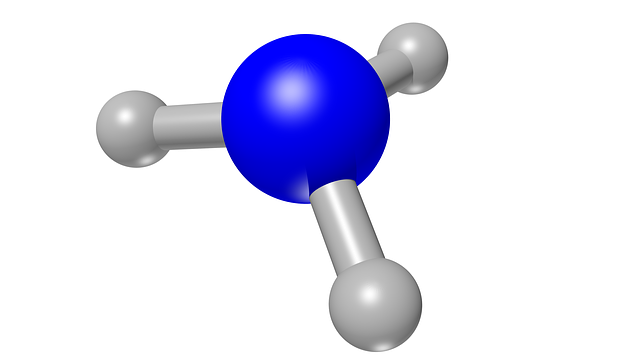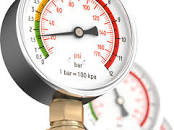Equilibrium is a condition of balance in a reversible chemical reaction. Equilibria in which all of the reactants and products are present in the same phase usually as gases or solutions are homogeneous equilibria.

What is Homogeneous Equilibria?
When the forward and reverse reaction rates equalise and the reactant and product concentrations stabilise, the reaction has reached homogeneous equilibrium. Substances in the same physical condition are remain in this equilibrium. Like every participant may be dissolved in a single solvent or in the gaseous state.
Example of Homogeneous Equilibria in Gaseous Systems:
Consider the formation of ammonia in the Haber process:
N2(g)+3H2(g)↔2NH3(g)
In this reaction, nitrogen, hydrogen, and ammonia are all gases, making it a case of homogeneous equilibrium.
Example of Homogeneous Equilibria in Solutions:
The dissociation of acetic acid in water is another classic example:
CH3COOH(aq) ↔ CH3COO−(aq) + H+(aq)
Here, all species are in the aqueous phase.

The Role of the Equilibrium Constant (K):
For homogeneous equilibria, the equilibrium constant (K) helps us calculate the ratio of the concentrations of products to reactants at equilibrium. For a generic reaction:
aA + bB ↔ cC + dD
The equilibrium constant expression is written as:
Kc = [C]c [D]d / [A]a [B]b
Here, the square brackets [ ] denote the molar concentrations of the substances, and the exponents correspond to the stoichiometric coefficients.
In the case of gaseous systems, we often use the partial pressures of the gases and write the equilibrium constant as Kp:
Kp = (PC)c (PD)d / (PA)a (PB)b
Characteristics of Homogeneous Equilibria:
1.Same Phase: All participating substances are in the same physical state.
2.Dynamic Nature: Even at equilibrium, the forward and reverse reactions continue to occur at equal rates.
3. Dependence on Conditions: The position of equilibrium depends on temperature, pressure, and concentration, as predicted by Le Chatelier’s Principle.
Factors Affecting Homogeneous Equilibria:
Temperature: Its depend on the reaction, is exothermic or endothermic, changing the temperature can cause the equilibrium to change.
.
Pressure: If the amount of moles of gas in reactants and products varies, altering the pressure will have an effect on the system for gaseous equilibria.
Concentration: When reactants or products are added or removed, the equilibrium is upset and must be rebalanced.

Importance in Chemistry:
Predicting how reactions will behave under different circumstances requires an understanding of homogenous equilibria. It establishes the basis for researching practical procedures such as biochemical systems, acid-base reactions and industrial synthesis.
To sum up, homogeneous equilibria are a basic idea in chemistry that emphasises the fine balance that exists in chemical systems.
In chemical reactions, homogeneous equilibria happen when all reactants and products such as all gases or all solutions are in the same phase. Uniform physical states of the constituent substances define this kind of equilibrium, which is a subset of chemical equilibrium.
Yes, an example of homogeneous equilibria in gases is the reaction:
2SO2(g) + O2(g) ↔ 2SO3(g)
In solutions, the ionization of acetic acid is an example:
CH3COOH(aq) ↔ CH3COO−(aq) + H+(aq)
For a reaction aA + bB ↔ cC + dD, the equilibrium constant (Kc) is expressed as: Kc = [C]c [D]d / [A]a [B]b
If the reaction involves gases, the equilibrium constant can also be written in terms of partial pressures as Kp:
Kp = (Pc)c (PD)d / (PA)a (PB)b
The main factors affecting homogeneous equilibria are:
• Concentration: When reactant or product concentrations shift, the system readjusts to bring the system back into equilibrium.
• Temperature: Depending on whether the reaction is exothermic or endothermic, changing the temperature causes the equilibrium to change.
• Pressure: If the amount of gas molecules varies between reactants and products, changes in pressure might impact equilibrium in gaseous reactions.
According to Le Chatelier’s Principle, a system will adapt to counteract a disturbance and restore balance if a dynamic equilibrium is upset. For instance, in an exothermic reaction, raising the temperature causes the equilibrium to move toward the reactants, while increasing the concentration of a reactant causes the equilibrium to shift toward the products.
In industrial processes such as the Contact process for the production of sulfuric acid and the Haber process for the synthesis of ammonia, homogeneous equilibria are essential. It is also important for comprehending biological reactions in living things and acid-base equilibrium in solutions.
All reactants and products (such as all gases or all solutions) are in the same phase when there is a homogeneous equilibrium. Heterogeneous equilibria, on the other hand, involve materials in several phases, including gases, liquids, and solids. Take the following example.
Homogeneous: H2(g)+I2(g)↔2HI(g)
Heterogeneous: CaCO3(s)↔CaO(s)+CO2(g)